| Early Spring Date: | April 19 |
| Late Spring Date: | May 31 |
| Best Dates to See in Spring: | May 2-22 |
| Has Nested in or near Park | |
Spring: Ruby-throated Hummingbirds are common breeding birds in the Washington metro area, and some are seen at Monticello Park. They begin to show up in late April and early May, and they typically can be seen during the first few weeks in May. The Ruby-throat is the only hummingbird species who regularly occurs in the eastern United States during the spring. Some people put up sugar-water feeders for them.
Fall: About 40 Ruby-throated Hummingbird sightings occur each fall at Monticello. Many of these involve the same bird or birds being seen on multiple days. There are never many at the park, and you might see one any time from the beginning of August through the end of September.
Where to See Them in the Park
The Ruby-throated Hummingbird is the smallest and the fastest bird who visits Monticello, and you are more likely to mistake one for a large insect than for another bird species. They can be seen anywhere in the park. They dart around quickly, so they can be difficult to see. One year, a Ruby-throated Hummingbird regularly was seen perched at the top of a dead tree near the entrance to the park as if on breeding territory. Hummingbirds have probably nested in the park or the surrounding neighborhood.
Physical Description
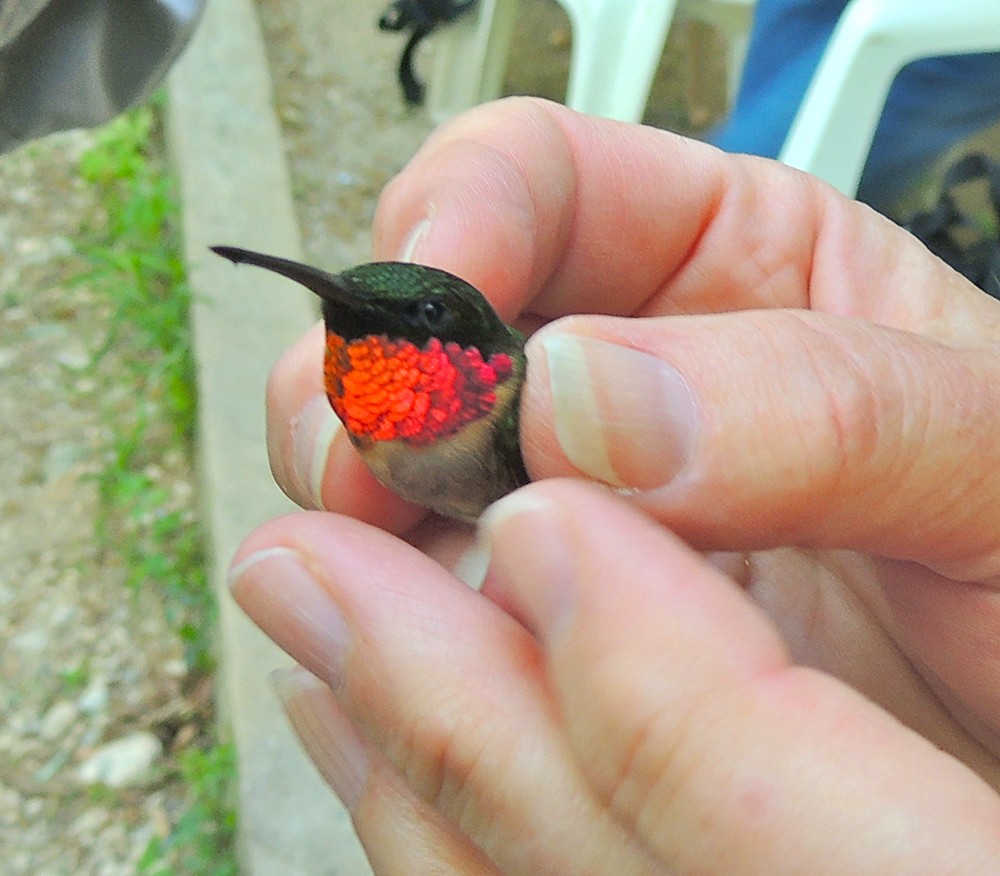
The male has a green head and back, a black chin, and a red throat. Some of the feathers on the head and throat look like sequins. The male in the above photo was caught at the banding station at Occoquan Bay National Wildlife Refuge. He is about the size of the bander's thumb.
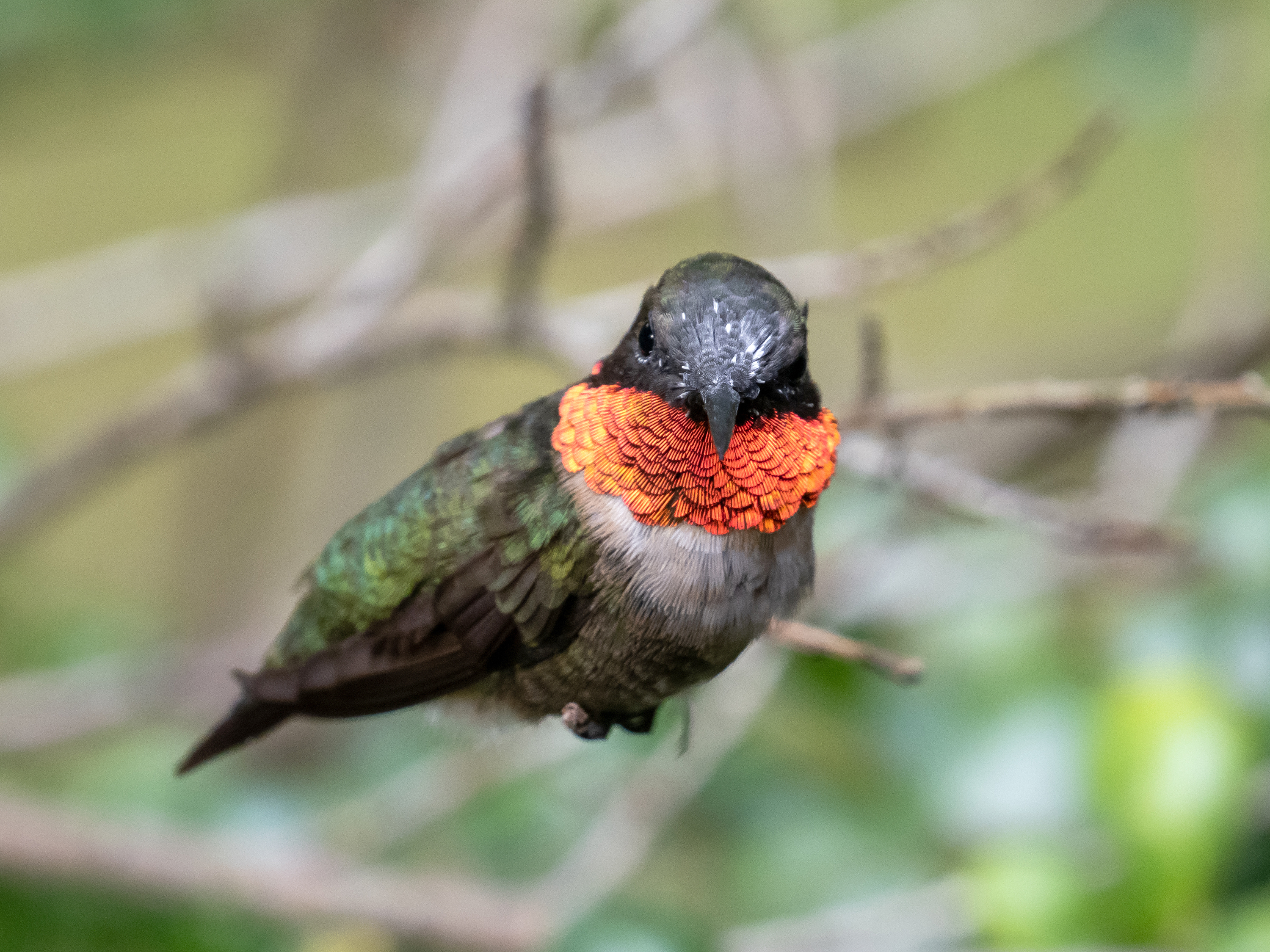
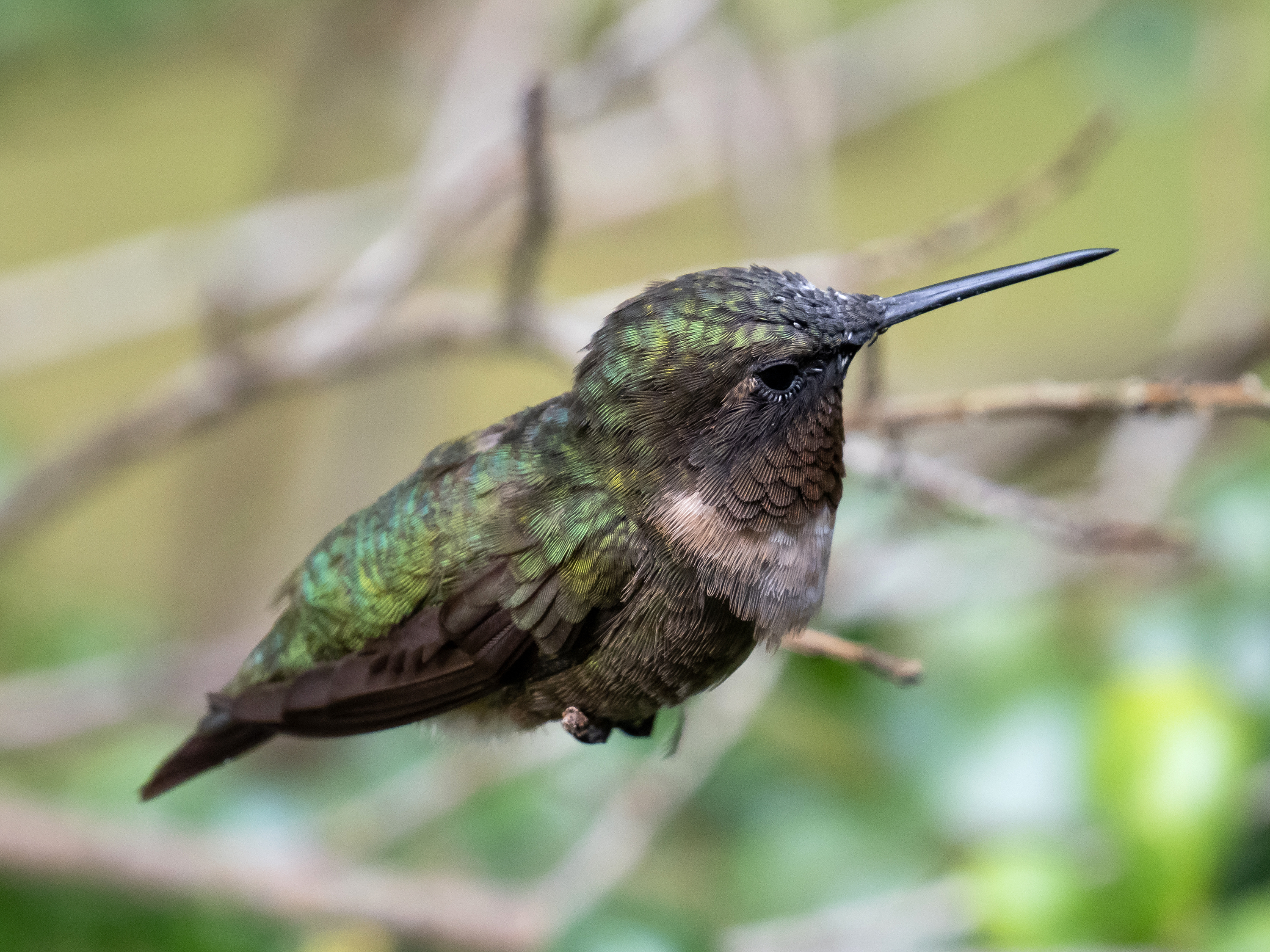
The throat of the Ruby-throated Hummingbird reflects red light, but it does not contain red pigment. If you see a male Ruby-throated Hummingbird facing toward the light, his throat feathers look bright red. If the throat is facing away from the light, the feathers appear to be dull red or black.
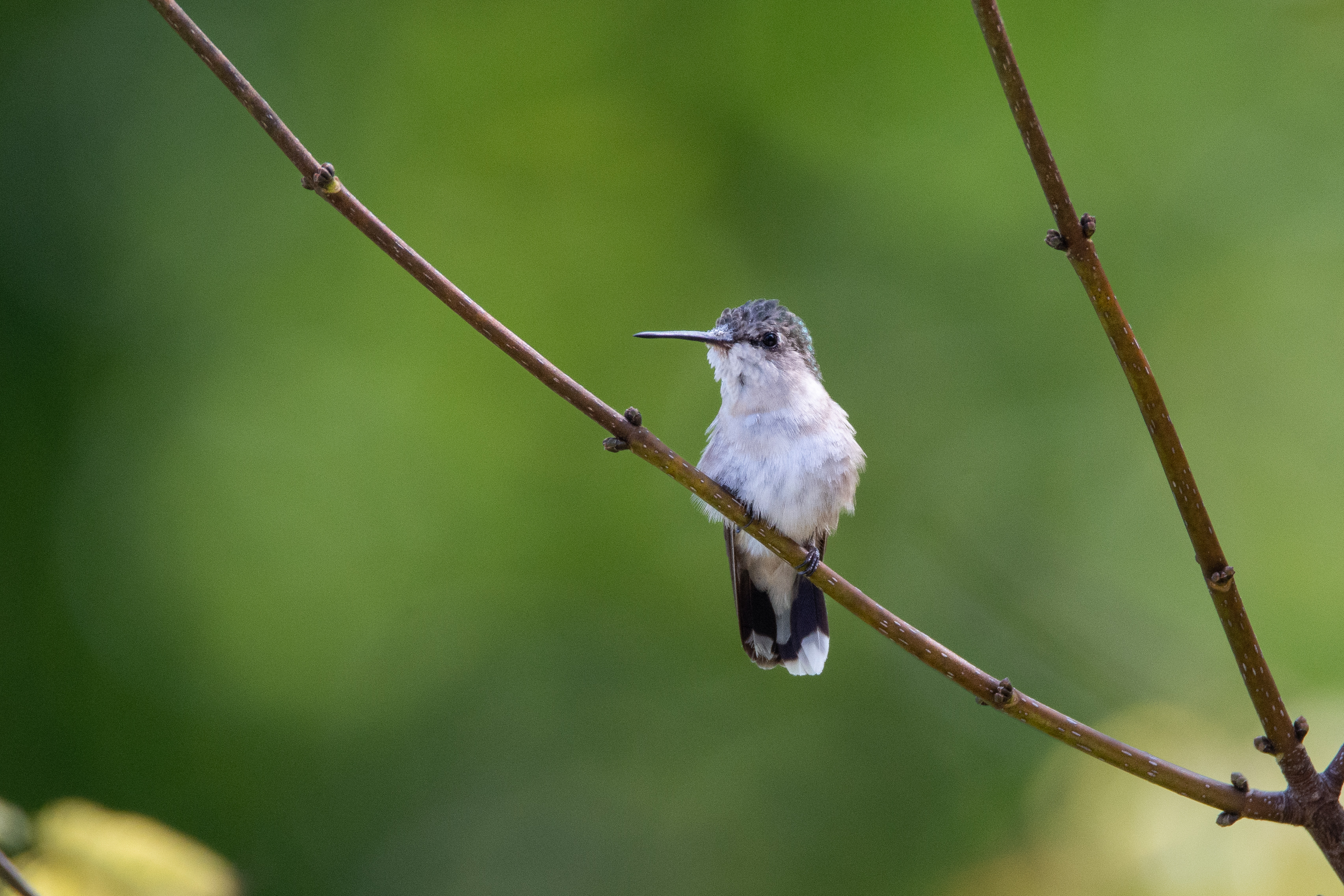
Females have a white throat, and their flanks are buffy.
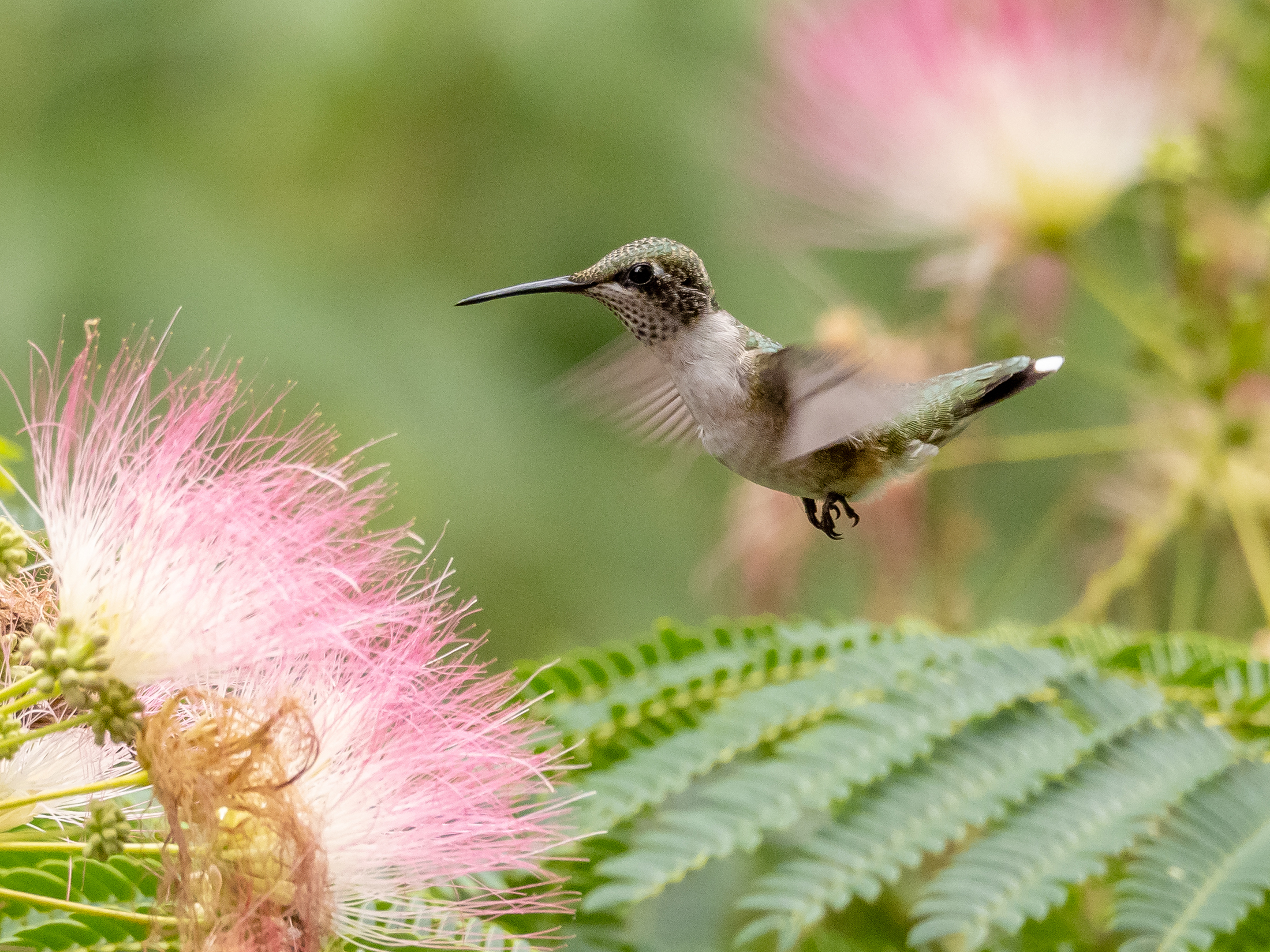
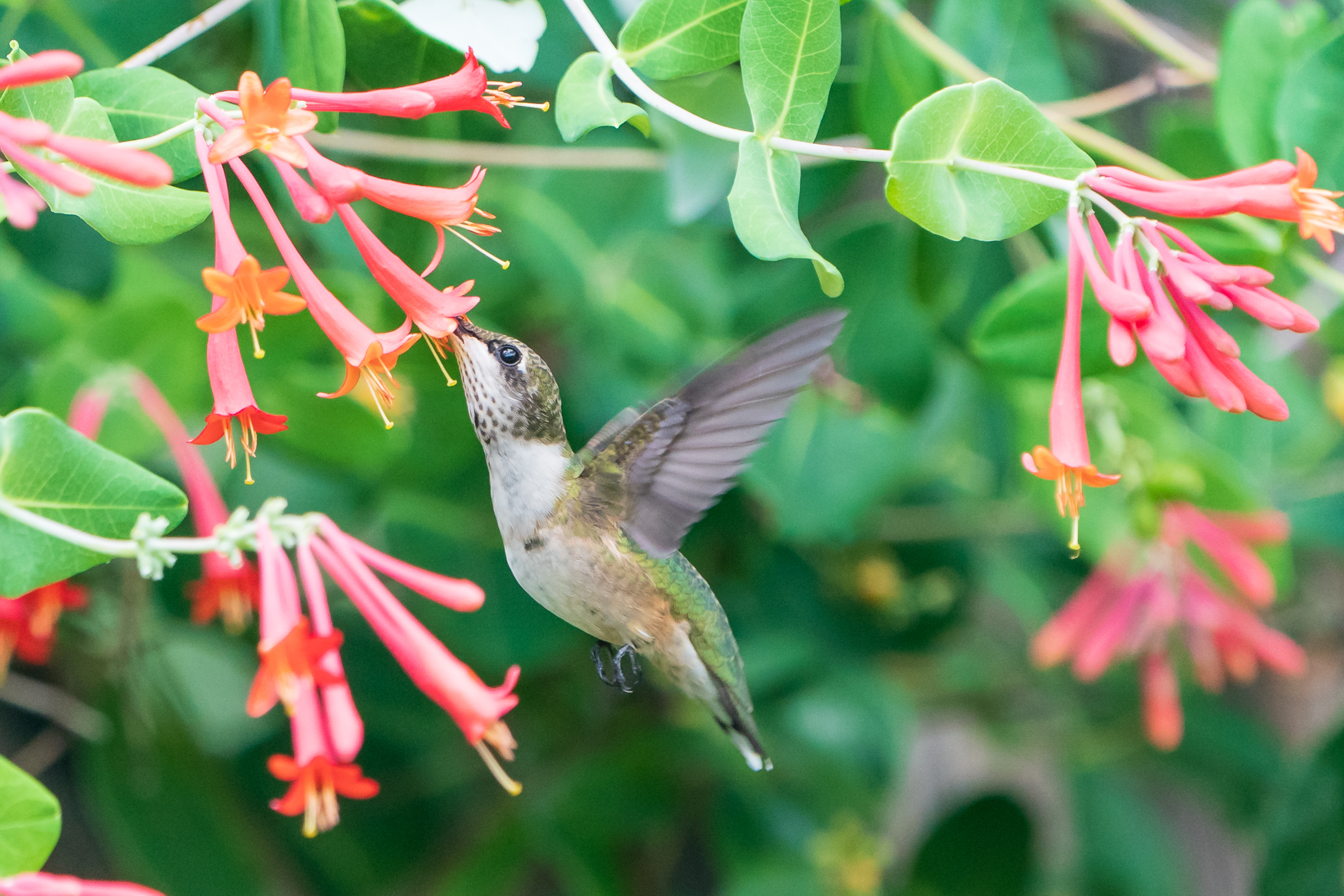
Immature Ruby-throated Hummingbirds have small black spots on their throat. The spots on an immature male are darker than the spots on an immature female.

On some immature males, you can see traces of red throat feathers among the black spots.
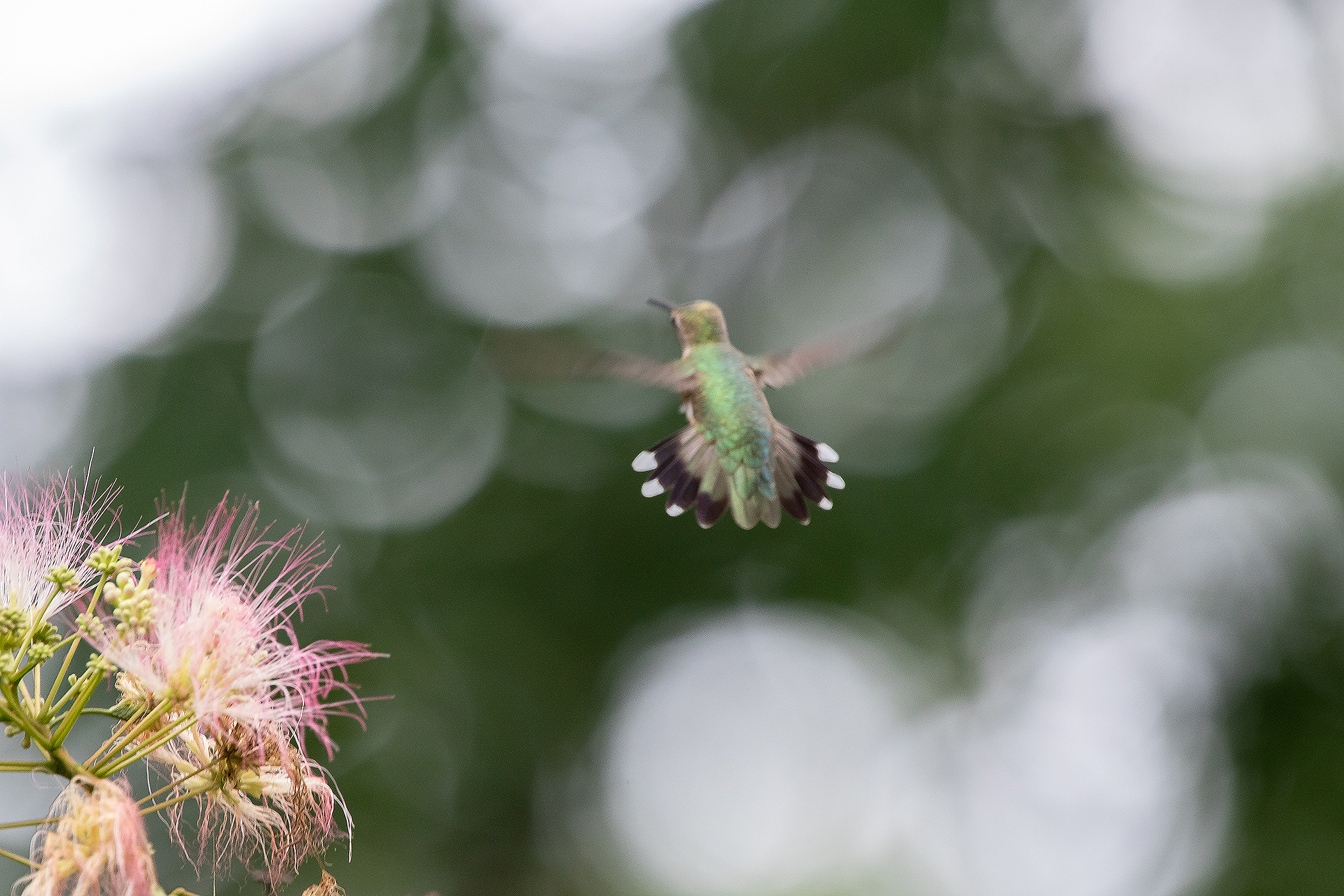
Identifying hummingbirds can be difficult in areas where multiple species occur. A key fieldmark can be the markings on tail feathers. The tail of a Ruby-throated Hummingbird has black-and-white markings which usually cannot be seen in the field, because hummingbirds open and close their tail too quickly. The outside feather on each side has the most black and white, and each of the next two feathers has progressively less white. The fourth feather has little or no white, and the fifth and sixth are green.
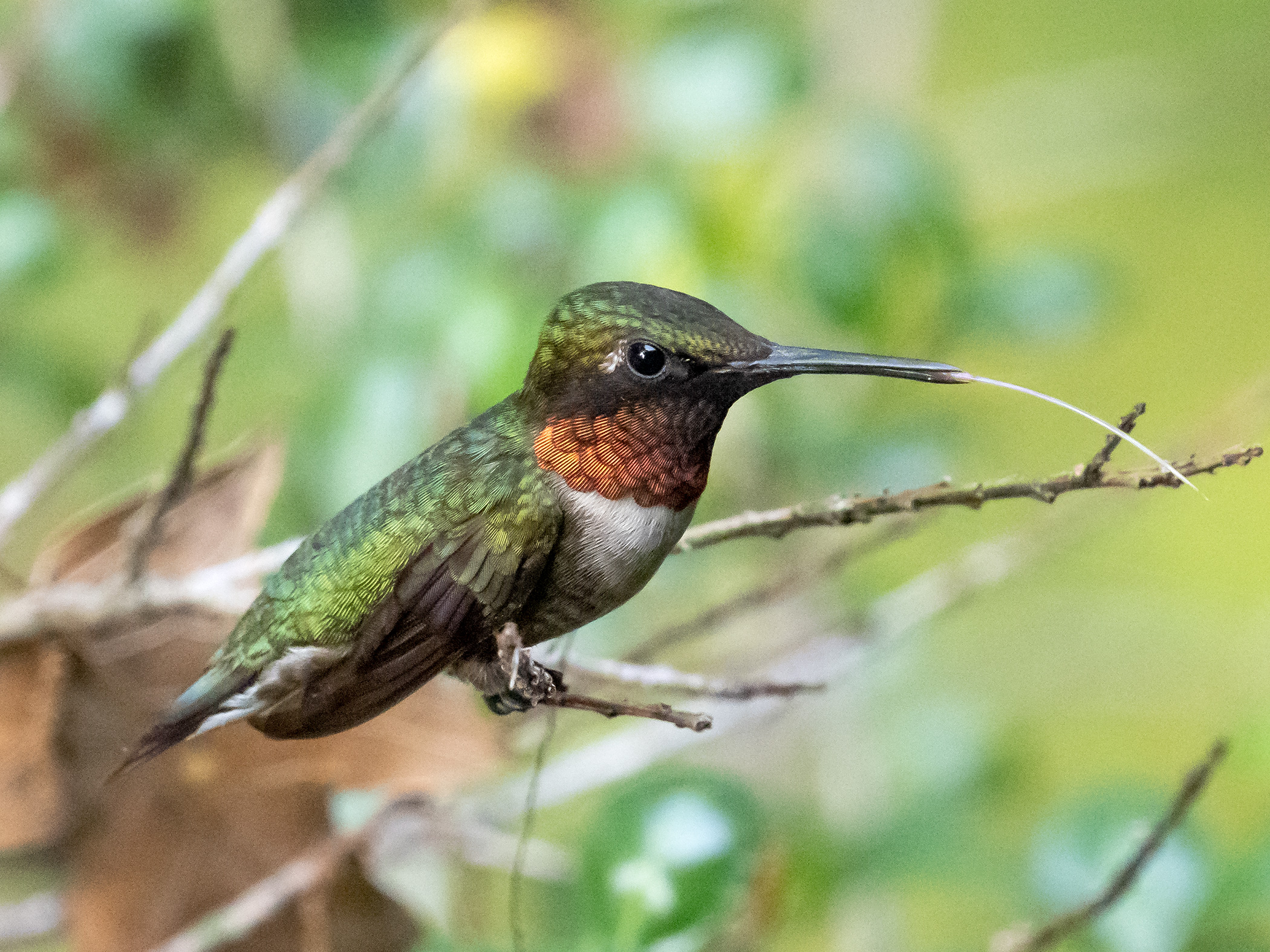
Hummingbirds have long tongues, which they use to sip nectar from flowers.
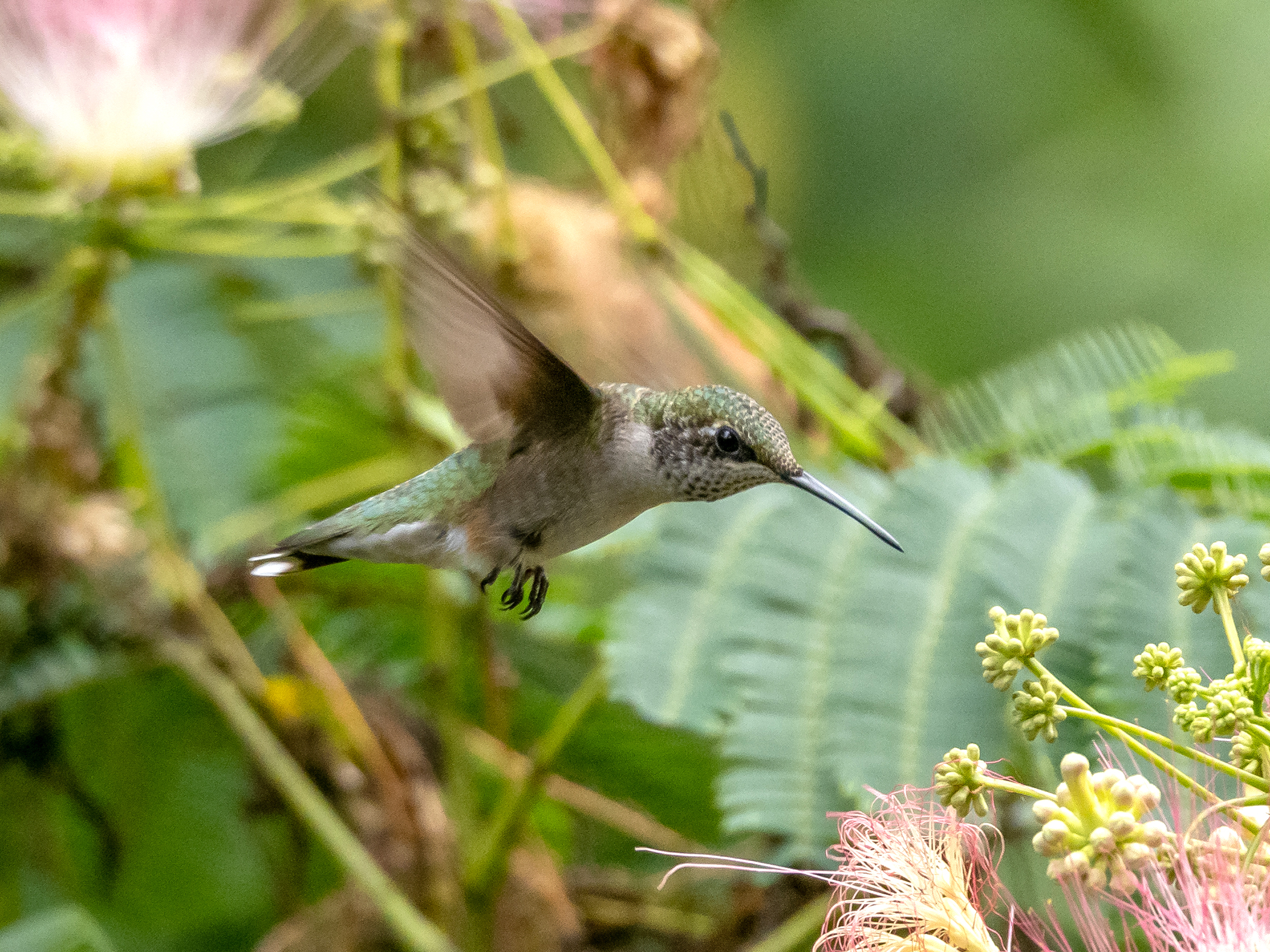
Hummingbirds are capable of perching, but they are among the few groups of birds (along with loons, grebes, kingfishers, and swifts) who cannot walk. Their feet and legs are smaller and weaker relative to their body size than most types of birds. Hummingbirds do not need strong legs, because they find most of their food while on the wing.
Vocalizations
The call of Ruby-throated Hummingbirds is a soft, repeated chirp. They beat their wings faster than 50 times a second, which can generate a loud hum.
Hear the vocalizations and sounds of the Ruby-throated Hummingbird.
Notes
The Ruby-throated Hummingbird is one of more than 350 hummingbird species. Hummingbirds are found only in the New World. The smallest bird species in the world is the Bee Hummingbird in Cuba, and it is also one of the smallest homoeothermic creatures in the world, which means they maintain a stable internal body temperature. (Scientists prefer the term homeothermic to the less accurate warm-blooded.) Other types of birds can hover, but hummingbirds are the only birds capable of flying backwards.
Origin of Names
Common Names: Ruby-throated from the red-throat. Hummingbird from the sound made by the beating wings.
Genus Name: Archilochus means chief among men, which could mean first among birds.
Species Name: Colubris is a serpent, but this is probably a misspelling of colibre, which is a hummingbird.
Ruby-throated Hummingbird video footage
Return to the Index
